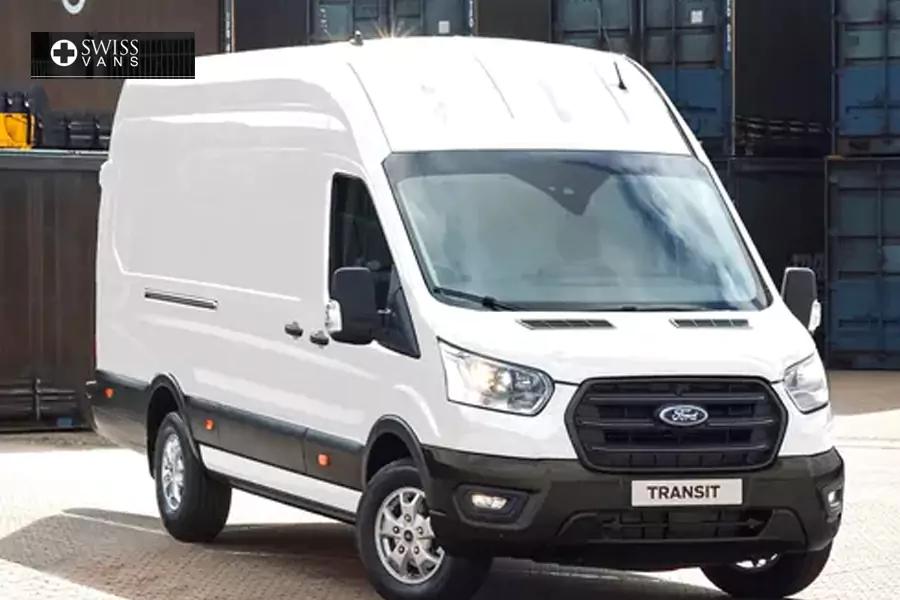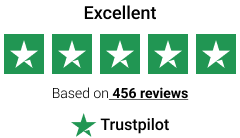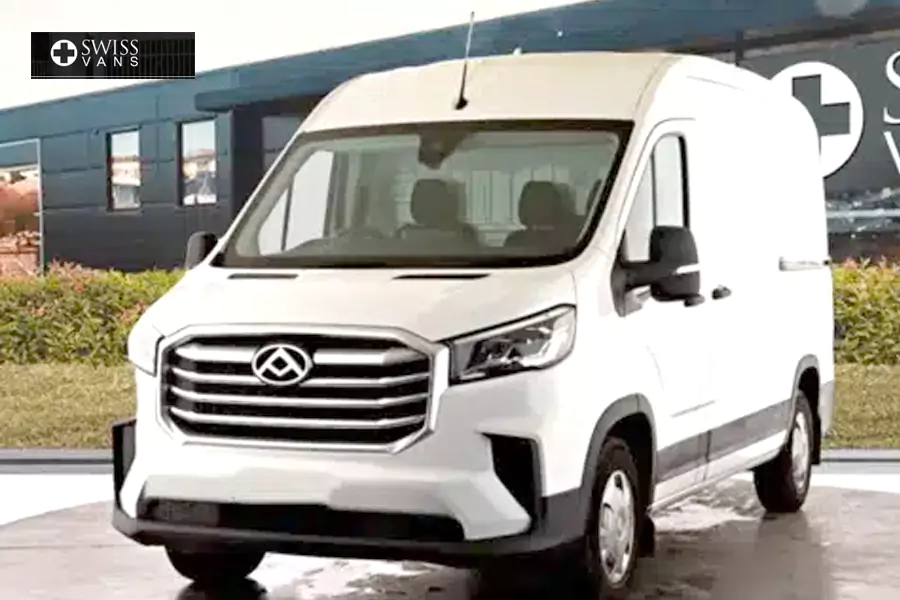Ford Transit Van

- Motoring on your terms
Lease type:
£320.00 +VAT per month
Ford Transit Lease Deals
From £320 Month L3H2
Monthly Payment ex VAT
Call Us
ENQUIRE
Get your personalised quote
Call 0118 338 3799
Request a callback
Vehicle Highlights
The Ford Transit van is Ford’s excellent offering in the large-van category. The commercial vehicle that started it all, this big Ford Transit is hard-working, reliable, and everything you would expect from a van of its reputation. It’s in the same overall class as other large vans like the VW Crafter, Mercedes Sprinter, and SAIC Maxus Deliver 9, and it benefits from Ford’s decades of expertise and pioneering spirit.
Ford Transit Body Styles
The Transit is available as a traditional panel van and also as a DCiV (Double Cab-in-Van, double cab, or crew cab). While the van seats two or three including the driver, the Transit DCiV / Transit double cab can accommodate up to seven in total. It’s a great option if you know you’ll need to carry passengers along with your cargo, and it still has ample loadspace.
Engines, Drive Systems, and Transmissions
Ford provides a selection of engines for the Transit, all of which are based on their efficient and powerful 2.0-litre EcoBlue diesel. You can choose from 105hp / 310Nm, 130hp / 360 Nm, 170hp / 390Nm, and 185hp / 415Nm. There’s also the option on models with manual transmissions for an to upgrade to an EcoBlue Hybrid with “mild hybrid electric vehicle technology”, or mHEV. This uses a 48-volt lithium-ion battery to recover and store unused energy, and this energy can then be used to power some of the van’s electrics and support the engine. It’s a little extra eco touch to lessen the Transit’s footprint while still ensuring that you have the power you need, when you need it.
And of course, all of the EcoBlue diesel models are equipped with an AdBlue tank to keep them in line with the Euro 6.2 emissions regulations and reduce nitrogen-oxide particulate pollution. The AdBlue tank will last you quite some miles, and you can refill it yourself (easily!) when it’s empty.
There’s a choice between front-wheel drive (FWD), rear-wheel drive (RWD), and driver-activated all-wheel drive (AWD) depending on which overall configuration you choose. In terms of gearboxes, the Ford Transit van is most commonly available with a 6-speed manual gearbox, but there’s also a 6-speed automatic transmission on some version. There’s even one 10-speed automatic option: the Jumbo. More on that below!
Transit Body Lengths and Dimensions
The Transit big van as a van and a DCiV is available in three wheelbase lengths: L2, L3, and L4. It also comes in three roof heights (H2, H3, and H4), and these lengths and heights are combined as L2 H3 or L3 H2. Load volume, load height, and overall height depend not only on the body style, length, and height, but also on what drive system the van has. As such, the overall-height, loadspace-height, and load volume figures below — apart from in the case of the Jumbo L4H3 — cover the full range possible, with the lowest figure for FWD first and the highest figure for RWD / AWD second. I hope that makes sense! (The L4H3 only comes in RWD / AWD, so mercifully, that simplifies things.)
L2 H2
Overall length: 5531mm
Overall height: 2413-2534mm
Wheelbase: 3300
Loadspace length: 3044mm
(DCiV: 2038mm)
Loadspace height: 1886-1786mm
Load volume: 10.0-9.5m3
(DCiV: 6.1-5.7m3)
L2 H3
Overall length: 5531mm
Overall height: 2652-2771mm
Wheelbase: 3300
Loadspace length: 3044mm
(DCiV: 2038mm)
Loadspace height: 2125-2025mm
Load volume: 11.2-10.7m3
(DCiV: 6.6-6.4m3)
L3 H2
Overall length: 5981mm
Overall height: 2411-2533mm
Wheelbase: 3750
Loadspace length: 3494mm
(DCiV: 2488mm)
Loadspace height: 1886-1786mm
Load volume: 11.5-11.0m3
(DCiV: 7.6-7.2m3)
L3 H3
Overall length: 5981mm
Overall height: 2676-2769mm
Wheelbase: 3750
Loadspace length: 3494mm
(DCiV: 2488mm)
Loadspace height: 2125-2025mm
Load volume: 13.0-12.4m3
(DCiV: 8.4-8.0m3)
L4 H3
Overall length: 6704mm
Overall height: 2715-2778mm
Wheelbase: 3750
Loadspace length: 4217mm
(DCiV: 2488mm)
Loadspace height: 2025mm
Load volume: 15.1m3
(DCiV: 10.6m3)
And now, some straightforward, easy-to-follow stats for all Transit big vans:
Overall width: 2474mm (with mirrors)
Loadspace width: 1784mm
Loadspace width between the wheel arches: 1392mm
GVWs and Payloads
If you’re still with us after all of that, here are some more numbers for you! Ford refers to the Transit’s gross vehicle weight (GVW) as its gross vehicle mass (GVM). Whatever you call it, the GVW / GVM is the total combined permitted weight of the vehicle. This includes the van itself, the driver and any passengers, the payload, and the fuel. The Transit’s GVM ranges from 2940kg (or 2.9 tonnes) at the low end to a whopping 5000kg (5.0 tonnes) at the high end for the L4H3 Jumbo, but a GVM of 3500kg / 3.5 tonnes is the most common.
As you might expect, there’s a huge range of payloads too — the payload being the maximum permitted weight of what you can carry apart from the van and the driver — from 895kg to 2209kg in the normal range and 2383kg on the Jumbo.
Transit Interiors and Trims
The size of the Transit big van and what it can carry are obviously important, but so is what’s in the cab. You spend a lot of time in your van, so it needs to be comfortable, convenient, and somewhere you don’t mind being. Transit trim levels start with Leader. Then you have Trend, then the new Trail trim (which is a little more suited to difficult terrain), and finally the Limited trim. All trim levels and models come with a basic set of safety features too; we’ll detail those below the trims. So, without further ado, here are the trims.
Leader includes:
- DAB/AM/FM radio with 4.2” screen (not touchscreen), 2x USB ports (with iPod functionality), Bluetooth, Ford Pass Connect
- Electric front windows
- Full-width unglazed metal bulkhead (van) or glazed bulkhead (DCiV)
- Driver’s seat with 4-way adjustments, cushion tilt, and armrest
- Trip computer
- Rubber floor covering in the cab
- Rubber floor covering everywhere in the DCiV
- Steering column adjustable for height and reach
- Door mirrors with indicator and blind-spot eliminator
- Sliding load door (passenger side)
- Halogen Projector Headlights with courtesy delay
- Remote central locking
- Load tie-down loops
Trend includes (in addition to Leader):
- DAB/AM/FM radio with Ford SYNC 2.5, 8.0-inch touchscreen, Bluetooth, Applink, USB port with iPod functionality, remote audio control, Ford Pass Connect
- Cruise control with speed limiter (adjustable)
- Quickclear heated windscreen
- Lumbar adjustment for the driver’s seat
- Steering wheel with leather trim
- Shoulder-height trim board in the load compartment (van only)
- Easily cleaned load floor
- Power-folding door mirrors
- Project-style halogen headlights with cornering lights (static)
- Parking-distance sensors (front and rear)
- Rain-sensing windscreen wipers (front)
- Front fog lights
Trail — the one for more difficult terrain — features (in addition to Trend):
- Seat trim in full leather
- Front air-conditioning (manual)
- 16” 10-spoke alloy wheels, painted black
- Special upper grille design
- Front skid plate (painted silver)
- AWD or FWD with mechanical limited-slip differential (manual transmission only)
- Locking wheel nuts
And finally, the Limited trim includes (in addition to Trend):
- Front air-conditioning (manual)
- Gearshift knob in leather trim
- 16” 5×2-spoke alloys wheels
- Bi-xenon headlights with LED daytime running lights
- Side Park Assist
- Front bumper in the body colour
- Locking wheel nuts
Safety features on all models:
- ABS (anti-lock braking system) with EBD (electronic brake-force distribution)
- Driver’s airbag (optional front passenger and curtain airbags)
- ESC (electronic stability control)
- Hill-start assist
- Curve control
- Roll Stability Control (RSC)
- Emergency Brake Assist (EBA)
- ISOFIX attachments in the DCiV
Transit Customisations and Extras
There are countless extras and upgrades available for the Ford Transit van. You could have a roof base carrier, a rear ladder, and interior roof rack, side bars, wind deflectors, an engine undershield, a wooden load floor, etc.: plenty of options to be sure your van does everything you need it to.
Conversions and Specials
The Transit is a big van, and the Jumbo especially is big and heavy enough that it could be used as an ambulance, welfare vehicle, or for another special purpose. Ford offers a variety of options to help you make sure that your conversion has all the features you need, so if you have specific requirements not mentioned here, that definitely doesn’t mean they’re not possible.
The Transit also comes as a chassis cab ready for conversions to a tipper, dropside, or Luton van. It’s a seriously versatile, seriously strong vehicle for a huge range of industry applications, and it’s great as a camper conversion too!
Ford Transit Van Finance
Here at Swiss Vans, we always do our best to find you the best deal on your new van. Whether it’s a Ford Transit lease or an affordable, low-rate finance agreement, we can help. We offer a wide variety of options including finance lease, lease purchase, contract hire, and hire purchase (HP). We also have fantastic deals on cash sales, so no worries if you want to buy outright.
The Big Van For You
Give us a call at Swiss Vans today and speak with our friendly sales team about the Ford Transit van. They can help with questions about finance, technical specs, conversions and more, and we’ll get you on the road as soon as we can. And if the Ford Transit big van is just a little too big for you, consider the Ford Transit Custom, Ford’s superb medium van!
Specification of the Transit
The main purpose of the Ford Transit is to move heavy stuff from here to there, so its features focus on strength, not style. That said, Ford has done a lot to make the Transit as comfortable and as practical as possible. There are four trim options — Leader, Trend, Trail, and Limited — and each offers something a little different. Leader is the base version, and it’s perfectly adequate, but we tend to recommend the Trend trim.
Trend’s main extra features include:
- DAB/AM/FM radio with Ford SYNC 2.5, 8.0-inch touchscreen, Bluetooth, Applink, USB port with iPod functionality, remote audio control, Ford Pass Connect
- Cruise control with speed limiter (adjustable)
- Quickclear heated windscreen
- Lumbar adjustment for the driver’s seat
- Steering wheel with leather trim
- Shoulder-height trim board in the load compartment (van only)
- Easily cleaned load floor
- Power-folding door mirrors
- Project-style halogen headlights with cornering lights (static)
- Parking-distance sensors (front and rear)
- Rain-sensing windscreen wipers (front)
- Front fog lights
7 Ways To Finance Your Van
Most of our competitors are leasing franchises. Their vans are usually purchased by the hundred; they may have sat on the lot for a while by the time you come along. These franchises tend to prefer contract hire as it locks customers in with them for longer. However, here at Swiss, we work with banks. We’re not tied in to any one plan, so we can offer you a wider array of options. Our vans are fresher and our deals are better as there’s no middleman franchise taking a cut.
Each of the following finance methods is tax deductible. It’s important to remember that, unless your insurance policy provides “new for old” cover, you will need a GAP insurance policy in case the vehicle gets written off. More on this at the bottom!
- Hire purchase: VAT down or VAT deferred. HP is a great way to actually buy a van. If you’re VAT registered, you can claim the whole VAT amount back within three months.
- Contract Hire: Bear in mind that there is a credit check with contract hire even though many people believe there isn’t. Contract hire is more popular on cars than vans, and it’s better for large fleets. In fact, it doesn’t offer any advantage for fleets of fewer than 10. (If you want to change more than 10 vehicles in one go, then please get in touch.)
- Lease purchase: As some manufacturers offer deals that can’t be used with lease purchase agreements, this may not be the best option. It’s similar to hire purchase as you own the vehicle at the end of the contract, but different in that there’s a large “balloon” payment at the end to help keep monthly payments lower. VAT-registered customers can claim back in the following quarter if they pay the entire VAT amount as the deposit. Lease purchase can be a great option for businesses if, for example, you want a T6.1 to keep and convert to a motorhome later on. Sometimes pre-registered vans are cheaper, so do ask us about what we’ve got available.
- Finance Lease: By far the most popular finance method as it attracts the lowest payments. Finance leases also attract the largest discounts from manufacturers. Another benefit of this method is that you can fit accessories to the van while you have it.
- Operational Lease: An operational lease is just like a finance lease apart from that you can hand the vehicle back at the end. Some of our Mercedes vans are like this.
- Asset Finance: We can finance many products, not just vans.
- Credit Limit: Pre-approve your van purchases 90 days in advance. This can be very useful if, for example, you have a contract tender.
GAP Insurance
If the vehicle is written off, your normal insurance may not cover everything you owe on your finance agreement. You could end up having to buy an older, cheaper van just to achieve the same monthly payments. A GAP insurance policy can help. For more information, please see our GAP policy page. And to buy a GAP insurance policy, you can click here
All manufacturers tend to follow the same formula when it comes to naming vans in terms of weight, height, and length, and these are usually abbreviated in the same ways too. The Length = L, and the larger the number after the L, the longer the van. The Height = H; the larger the number after the H, the higher the van. So an L2H1 van is much much smaller and cheaper than a L3H2 van, but in fact the latter is the most popular across all brands. Weight tends to go either 30 or 3000 on large vans, with the latter being the max Gross Vehicle Weight. Typically, a large van can carry around 1300kg to 1500kg. These large vans are almost all diesels, but there are a few electric options now too.
Optional Upgrades: If it’s on the internet and you send us a link, we can usually sell it on finance. Protecta Van is a pretty good site.
Some of these upgrades include:
- Ply lining: Wood and even stronger plastic. False floors and drainage vans.
- Van racking: From simple, budget, affordable wood racks to Sortimo Designed Racking Solutions. Sometimes, it’s easier if we just order the rack for you, and you fit it after van delivery.
- Roof racks and roof bars.
- Towbars and tachographs
- Van security: Alarm upgrades, deadlocks, anti-peel deadlocks
- Vehicle tracking, in-van WIFI, stereo upgrades, reversing cameras
- Utility specs
- Ramps and micro tail lifts (ramps are quite cheap)
- Steps
Automatic Large Vans: Automatic large vans are rare and often a custom order. Customers who order automatic large vans will generally be ordering for themselves, so they want something quite specific. Please don’t factory order any large automatics apart from a German one, or you could find you are waiting literally 12 months for delivery! (It’s a bit different if it’s already in stock.) A German manufacturer can factory-order an automatic in as little as 16 weeks!
I needed a commercial vehicle for private use as I'm not self employed and therefore paying the VAT upfront is quite a chunk of money to loose so needed it to be wrapped up in the monthly repayment. I'd already tried several other companies before Swiss Vans and non of them were interested. I'd pretty much given up and was looking at 2nd Hand vans until I came across Swiss Vans advert on Facebook. I sent a message (with very low expectation) and the next day I was contacted by Tom Jones (yes, a Welshman called Tom Jones who sells vans...!!!). Tom is the first person that actually took the time to listen to what I needed and how I needed it work. He went away and came back a couple of hours later and explained that initially this wasn't going to be easy to achieve but to leave it with him and that he'd call me the next day. To be honest, I didn't think I'd hear from him again but true to his word he called me the next day and said that he had it all worked out, all agreed and all in place ready to go. Tom fired over the paperwork, I paid the small holding deposit and a few weeks later the vans been delivered and completely exceeded my expectations.
I'm a great believer that 'People buy People', yes Swiss Vans are truly excellent and I'd go as far as to say that in my experience, they're better than the rest but like all other companies they're only as good as the people they have working for them. Tom - I can't thank you enough, you're a credit to Swiss Vans, and Swiss Vans - you're outstanding.








